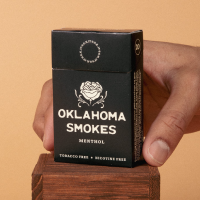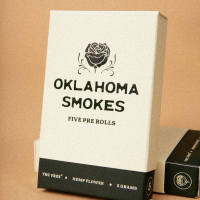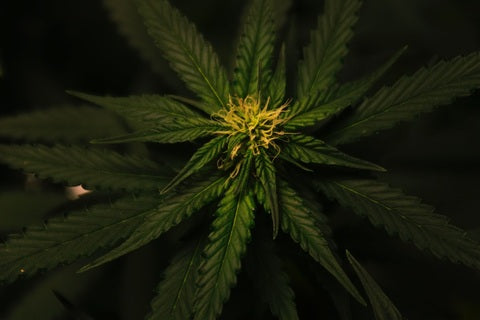With a growing preference for all natural, organic growing practices for food and other consumables, it comes with no surprise that hemp users would prefer a healthy green flower.
Prior to 2018, hemp growth and production within the United States remained illegal throughout the country. This meant the term “organic” at the time carried no weight and no real certification.
In recent years, the government has not only legalized the growth and use of hemp, but the FDA has created strict regulations on growing conditions and allowing organic certification for some growers.

U.S. Hemp Legalization
While hemp remains the oldest known plant grown for industrial use, and grown in nearly every corner of the world, hemp products weren’t found on store shelves for many years.
In the early years of the United States, hemp was essential for the production of fabrics, clothing, paper, ropes, building materials, and many other needed products. During this time, tax breaks and high payout prices encouraged farmers to grow the essential plant.
Not only was hemp used for its fibrous material, hemp and cannabis were used as medicines and concentrates as a “cure-all” substance.
Hemp would also play a major role in the U.S. war efforts during the World Wars as a source for parachute straps, heavy duty canvas, and other clothing.
During the 1970 U.S. War on Drugs, all cannabis products would become illegal, and hemp would wrongfully be linked into this illegalization thanks to its familial relation to psychoactive marijuana.
Although the government acknowledged that hemp was a separate thing from weed, hemp would remain illegal for 48 years.
The 2018 Farm Bill called for the legalization of hemp, allowing permits to become available to grow, test, and produce hemp products within the United States. This meant that CBD, and other non-psychoactive cannabinoids found in hemp, could be researched and more deeply understood for their potential health benefits and medical advantages.
Is Your Hemp Clean?
Currently, hemp growing laws are very strict, and while this may create some issues as a grower, it allows you as the consumer the assurance that the products you're purchasing are quality, safe, and clean.
When shopping for hemp products, a data sheet will often be attached somewhere on the grower or distributor’s web page. These tests are required during hemp production to ensure the crop is below that 0.3% THC requirement, while this testing also acts as a test for quality.
Whenever purchasing any hemp product for the purposes of benefiting from CBD, make sure to always check the lab report provided by the manufacturer of the hemp product. Many companies will at least provide reports to show the CBD content, some manufacturers also include the concentration of other cannabinoids, and some even provide proof that no pesticides or other contaminants made it into the CBD by the end of production.
You can check out Oklahoma Smoke’s lab report right here -- we’re proud to have nothing to hide!
The USDA
While the idea of organic seems simple, to be certified as an organic product within the U.S., an item must be certified by U.S. Department of Agriculture, or the USDA.
The USDA takes actions and places restrictions on the growth, handling, and processing, and production of agricultural items produced in the U.S., and is the agency that created the official guidelines that determine if something is eligible to be certified as organic.

Hemp vs. Marijuanna
The largest restriction with hemp farms can be found with the difference between hemp and marijuana.
While hemp and marijuana are both forms of the same cannabis plant, they are very much different.
Marijuana refers to the cannabis plant being used for its psychoactive and physical effects achieved from various cannabinoids. Most commonly, high THC levels remain responsible for getting you high.
Marijuana remains illegal in most states across the U.S., while medicinal uses are growing in popularity.
But what if your goal has nothing to do with THC? Such as fabric, paper, CBD, or research?
Hemp defines cannabis plants grown for industrial use with less than 0.3% THC. At this level of THC, you can expect no psychoactive effects, meaning a safe product for virtually all consumers.
Standard Farming
As farmers manage massive crops and sets of land, the idea of simple plant management in the same manner as someone would place on their garden or small home farm becomes a massive cost. In an attempt to battle these costs and losses, farmers attempt to alter the growing conditions of their fields.
When trying to grow any plant, you will find yourself battling certain elements. Soil conditions, weather, and pests have remained an uphill battle for farmers, encouraging the use of harsh chemicals and less than ideal growing conditions.
Adding these harsh chemicals and additives to the soil may appear to be a simple approach to defend against the elements, but adverse side effects to nature come into question.
Where does it all go?
These chemicals don’t simply disappear at the end of a growing season. Heavy rainfall paired with natural soil drainage causes these chemicals to move and make their way into your local waterways, such as rivers and ponds, and even into your yards.
History of Pesticides
Throughout history, stories of catastrophic bug infestations destroying crops are known, documented, and the effects on society.
So what do you do?
Farmers began putting chemicals and substances on, in, and near plants to help deter pests and other bugs which could be detrimental to crops. For thousands of years, different chemicals were tried and tested.
Until the 1970’s, minimal research and understanding was focused on pesticides or other contaminants affecting food sources. This meant farmers would use harsh chemicals such as lead, sulfur, aldicarb, tobacco, and even “smoking” fields in attempts to reduce pests.
As the U.S. government began researching and understanding pesticides, approved lists would be published by each state on what could be used with each crop. As research continues, many of the “approved” pesticides would soon be found to have major negative health consequences.
Farming Soils
As you’ve noticed, the soil in your yard is often different from the Great Plains, which is different from the moist soils of the southeast swamps, which differ from the clay-filled soils of the Midwest.
While farmers would prefer to only own land in the perfect climates for their crops, this isn’t always possible.
Soil additives such as nitrogen, potassium, sulfur, iron, magnesium, and various other minerals and compounds are added to increase fertility and create more ideal growing environments.
While these additives can be found within soils in other geographical locations, when added to a new environment, they run the potential risk for affecting nature.

Organic Methods
With the idea that pesticides and other non organic methods may be less than ideal, some growers have begun using organic methods.
The term organic can sometimes mean different things. To some, organic means using naturally occurring chemicals, while others believe that organic farming should use no chemicals whatsoever.
So who’s right?
Even though there’s a disagreement, no one is really incorrect. Growing organic focuses on using natural methods, and if you prefer to avoid adding non-native items into your growing environment altogether, that’s simply a preference.
Some naturally occurring compounds can still be dangerous to your health, which is where the USDA has stepped in to create clear, outlined guidelines to what can be used, and what can be considered organic.
Organic Soils
A major aspect to organic crops is healthy, nutrient-rich soil. This includes soil that not only retains moisture, but is packed with nutrients and microorganisms which help the plant get everything they need.
This is often accomplished through healthy compost and properly treated manure, but the plants themselves matter.
With some plants with hard root systems such as corn, the roots fail to break down in reasonable time, leaving the ground with a less than ideal structure. While hemp is a structurally hardy plant, the roots deteriorate and add nutrients to the soil.
USDA Certified Organic
While products can state they are organic, to receive the USDA Certified Organic seal takes a bit more work.
First a farm must be operating in an organic matter, at which point the grower will contact the USDA and apply. A certifying agent will review all the farms practices to ensure they comply with organic guidelines, and send an inspector on site.
The inspector will then review all claimed practices to ensure they are compliant. Once the certifying agent can review the inspector’s report, they can then choose if a grower’s products should become certified.
Summary
While the preference for organic products may push you towards specific growers, rest assured that hemp purchased from a quality distributor or manufacturer is required by law to be clean, tried, and true to how they are advertised.
Just because a farm has chosen not to work with the USDA to become certified, doesn’t mean their practices aren’t to your personal standards. Growers and CBD producers take pride in their practices, and are often excited to show pictures and information about what they’re doing to bring you the best product.
Always buy your hemp products from a trusted source. Companies such as Oklahoma Smokes have dedicated their time and efforts into not only bringing you a quality product, but to research and provide a range of educational materials that help you understand hemp, and the benefits of becoming tobacco-free.
Sources
Building Healthy Soil
What is Sustainable Agriculture?
History of Pesticide Use






